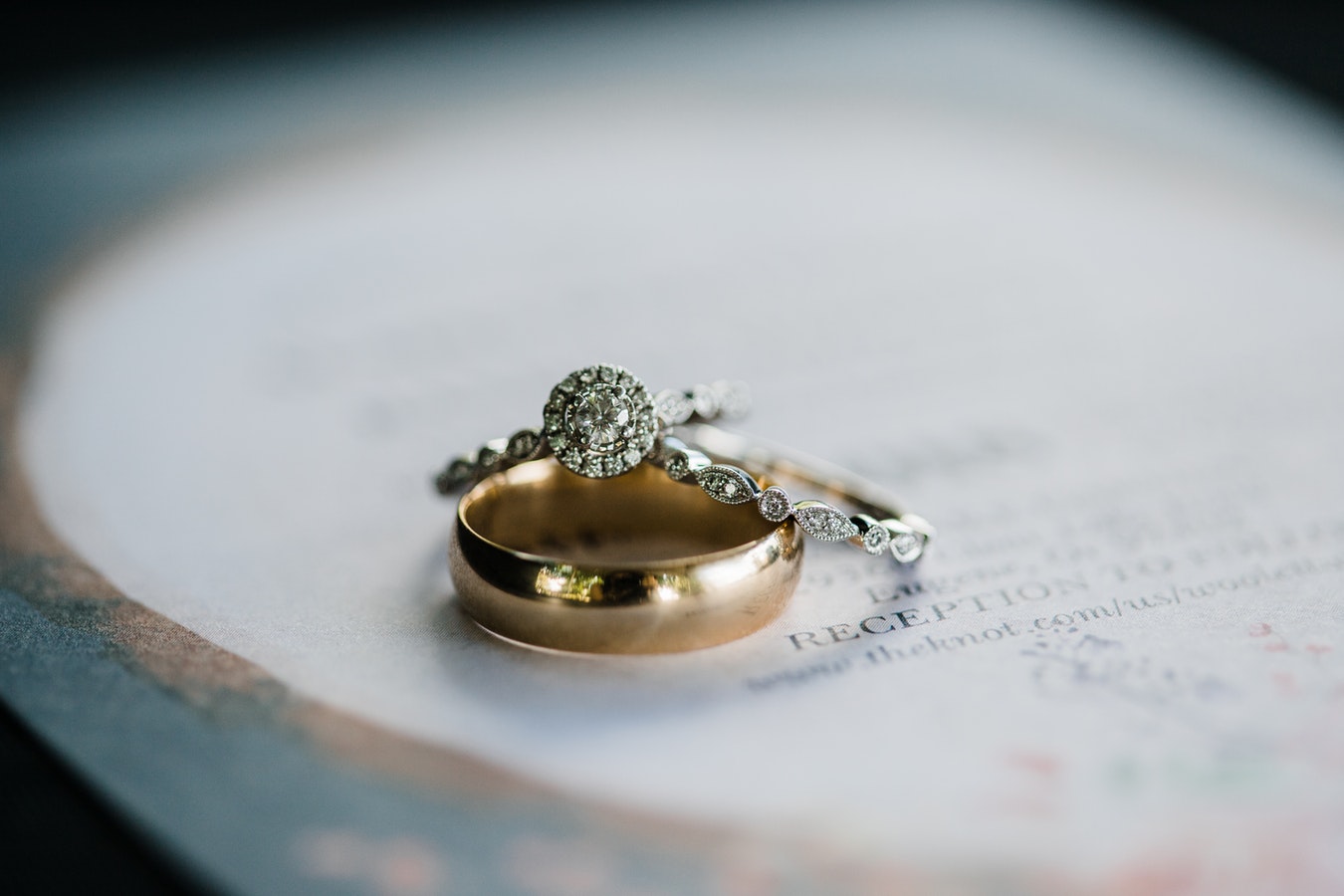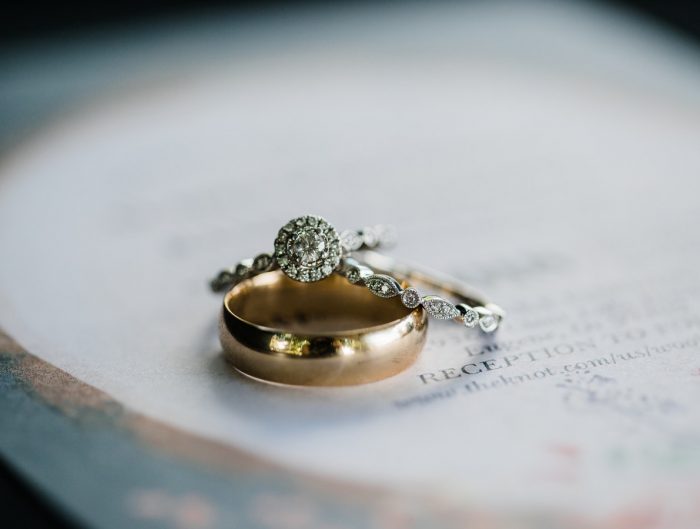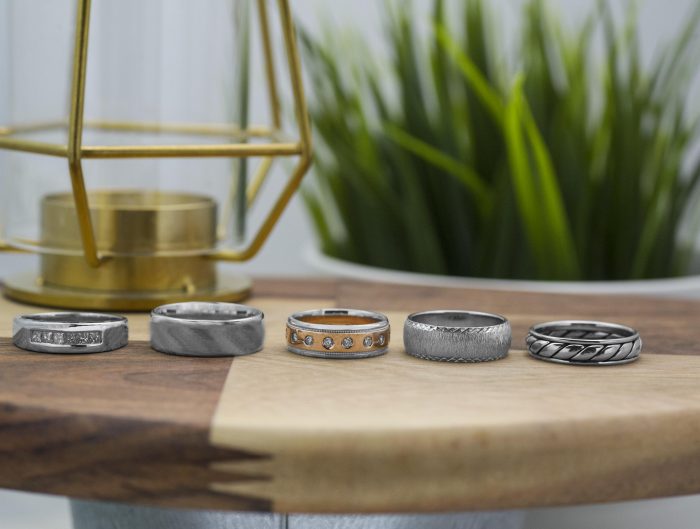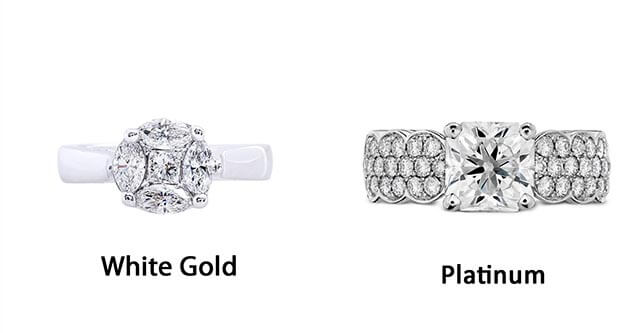When choosing an engagement ring for your sweetheart, you want to be sure that it suits her perfectly. It should embody her sense of style, be functional enough for everyday wear, and designed to outlast ever-changing trends. The same rules should apply when shopping for wedding bands. Depending on her style, she may want a band that perfectly complements her existing ring, or she may wish to opt for something that stands out as its own statement piece. No matter her preference, there are a variety of wedding band styles to choose from, a few of which we’ll highlight here.
Wedding band shapes
There are four standard wedding band shapes: straight, contoured, notched, and a contoured/notched combo. Which you choose depends on a few factors, including the shape of your center stone, the size of the band on your engagement ring, as well as her individual sense of style.
Straight wedding bands

A straight wedding band can effortlessly pair with an engagement ring, as long as the center diamond is settled in an elongated prong setting. You want to be sure that the center diamond is not touching the edge of the band. One advantage of a straight wedding band is that it can also be worn without the engagement ring. Some women prefer not to wear their engagement ring daily for fear it may be lost or damaged. In this case, a straight wedding band may be ideal.
Contoured wedding bands
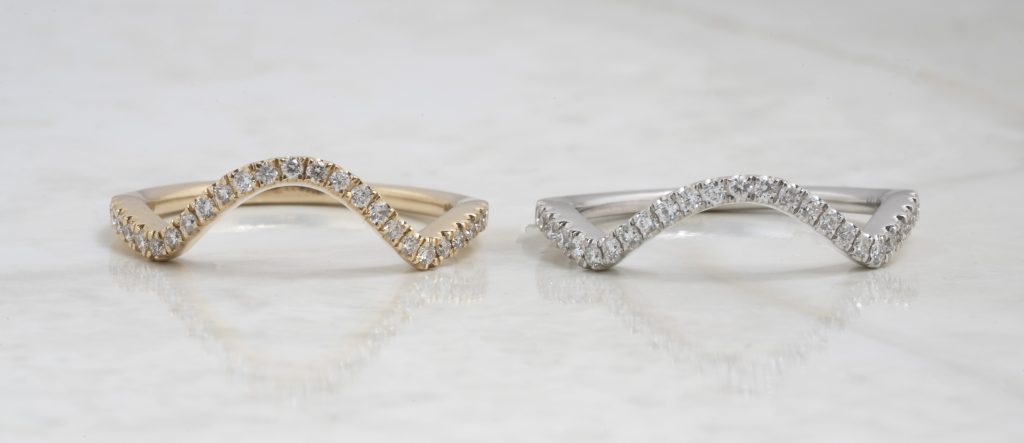
Contoured wedding rings are designed to fit flush with the curve of your engagement ring, so that they appear to be a single piece. These bands are curved in the center, then straight throughout. A disadvantage of contoured bands? Because they’re designed to enhance the shape of your engagement ring, they should only be worn as an accent. In other words, they’re not meant to be worn alone.
Notched wedding bands

A notched wedding band is a modification of a straight band that has a small dip at the center. This tiny dip ensures that the engagement ring and wedding band fall into a perfect fit like the pieces of a puzzle. Again, the two rings will appear to be one. Similar to contoured wedding bands, notched rings aren’t typically worn as standalone pieces.
Contoured and notched bands
If you want to ensure that your engagement ring and wedding band fit snugly together, then you may want to consider a combination of a notched and contoured wedding band. These rings are made to fit engagement rings with elongated center stones or with extra fine detailing. For example, an oval shaped engagement ring would pair nicely with a band that is both contoured and notched. Contoured and notched bands maximize the grandeur, artistry, and harmony of a bridal set.
Trio bridal sets
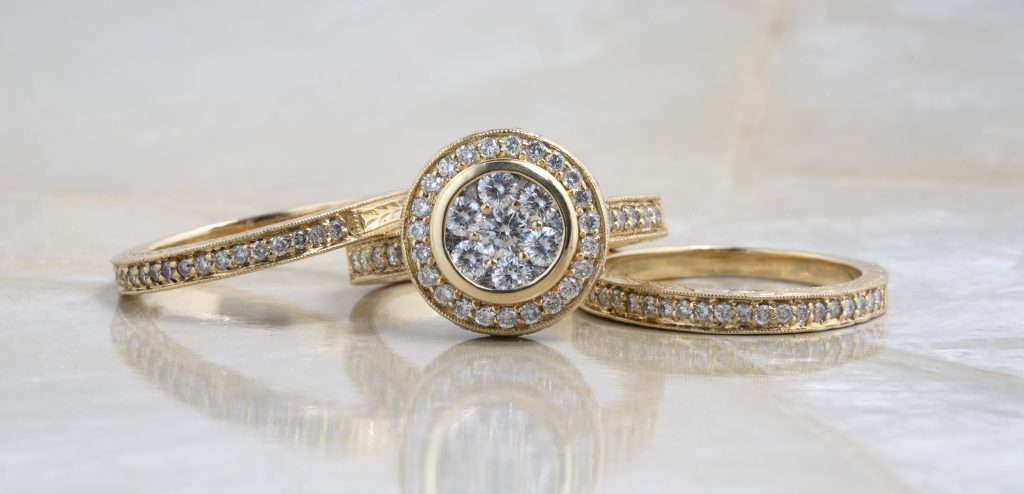
Two wedding rings worn on either side of an engagement ring is called a trio bridal set. Trio bridal sets are available in various styles and consist of dazzling combinations of white, yellow or rose gold, as well as diamonds and colored gemstones. This timeless design symbolizes the everlasting love shared between two people. These bridal sets are complimentary to any style and beautifully decorate the hand of their wearer. Choose the one that best embodies your individual style and personality.
Popular wedding band styles
Though your options are plenty, there are some wedding ring styles that have been consistently popular among brides-to-be, demonstrating their timelessness.
Pavé bands

Pavé bands feature diamonds set into the metal. The stones are set very closely together, making prongs and tiny metal beads nearly invisible. This setting pairs very nicely with engagement rings that also have a pavé band, or with those that have a diamond halo. Pavé settings are ideal for maximum sparkle, so if you wish to flaunt your flashier side, this wedding band style is fit for you!
Metal bands
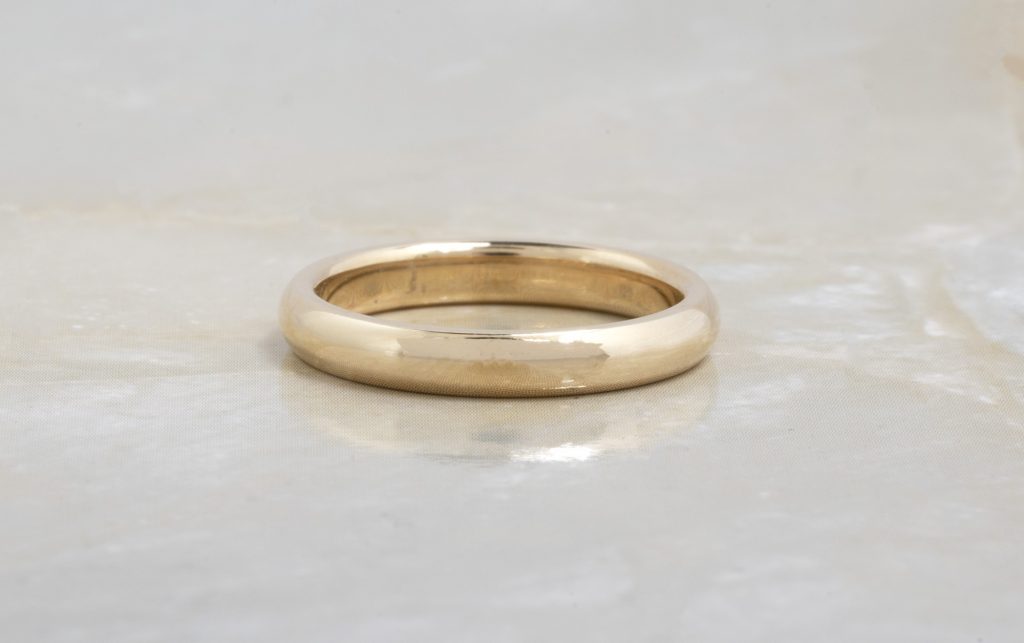
All metal bands are ideal for the no fuss bride. Though platinum is usually the preferred metal for this style, these bands can be made from white, yellow, and rose gold, as well as from titanium and stainless steel. If you’re the type to stress over losing a diamond or damaging a prong, a solid metal band may be a more practical choice. Not to mention, going this route will likely save you quite a bit of money.
Eternity bands
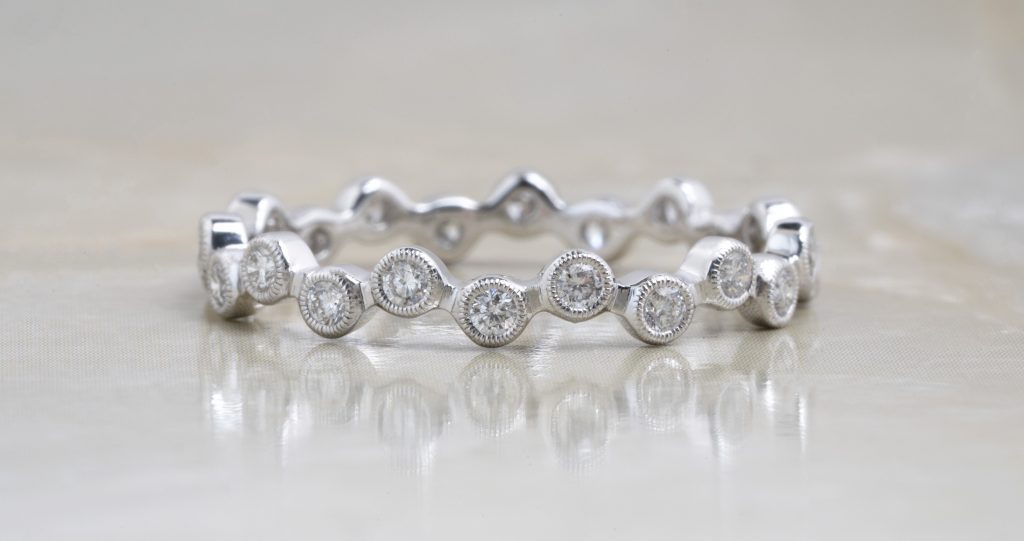
Eternity bands have long been a favorite among future brides. Eternity bands are characterized by small diamonds, all of the same size, wrapped around the entire ring. These bands are commonly found in two styles, the shared prong setting and the channel setting. A shared prong is just as it sounds, the stones share a prong with one another. A channel setting consists of diamonds set side by side within a metal “channel.” This setting is ideal for keeping your diamonds safe and secure. Eternity bands are fancied for their glittering brilliance. After all, extra diamonds translate to extra sparkle!
Anniversary bands
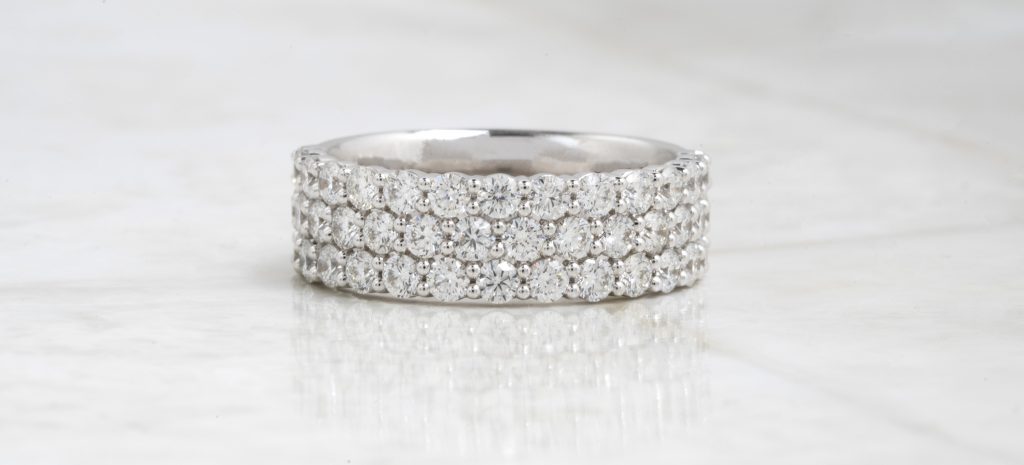
Anniversary bands closely resemble eternity bands, though the diamonds only go halfway around the ring instead of all the way. This style is often preferred over eternity bands for a few reasons. First, anniversary bands are easier to resize than eternity bands. In fact, eternity bands are often unable to be resized at all. You’re also less likely to lose a diamond or damage a prong with an anniversary band, whereas an eternity band is at greater risk simply because there are more of them. Anniversary bands match wonderfully with nearly all engagement rings, as long as the bands on both rings coordinate with one another.
Looking for the best San Diego jewelers?
Finding the perfect engagement ring and wedding band to match is not an easy task, but it helps knowing where to look! Leo Hamel Fine Jewelers is San Diego’s best jewelry store! For almost four decades, we have been dedicated to helping our customers find the engagement ring and wedding band of their dreams. Stop by our showroom on San Diego Avenue and browse through our wide selection of jewelry. If you have something specific in mind, don’t hesitate to ask for our assistance. Our savvy personnel will go out of their way to help you find what you’re looking for.

